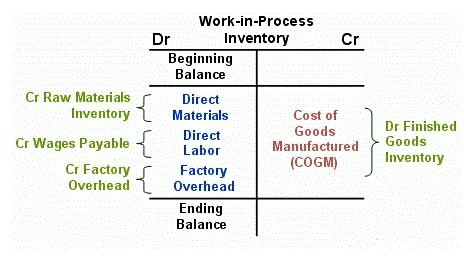
This way each accounting period starts with a zero balance in all the temporary accounts. Notice that the effect of this closing journal entry is to credit the retained earnings account with the amount of 1,400 representing the net income (revenue – expenses) of the business for the accounting period. Closing journal entries are used at the end of the accounting cycle to close the temporary accounts for the accounting period, and transfer the balances to the retained earnings account.

Calculating Operating Expenses

Operating income is the amount of profit that your business generates from its normal business operations. This income is calculated after deducting all the operating expenses from the gross profit. This means that recording a transaction in the period in which they occurred is paramount. Being able to show activities for https://x.com/BooksTimeInc different financial periods is crucial too.
- Delivered as SaaS, our solutions seamlessly integrate bi-directionally with multiple systems including ERPs, HR, CRM, Payroll, and banks.
- Expenses and losses are the costs incurred by your business in order to run its normal business operations and generate profits.
- According to the statement, the balance in Retained Earnings should be $13,000.
- These expenses include inventory costs, insurance, rent, payroll, etc.
- This is closed by doing the opposite – debit the capital account (decreasing the capital balance) and credit Income Summary.
Closing Entries
Therefore, starting the year with temporary accounts at zero balance is important. In the following financial year, the company starts the new year with adequate temporary accounts that start at zero. The separation of financial periods is a main concept in accounting standards. In a sole proprietorship, a drawing account is maintained to record all withdrawals made by the owner.

Reading Standard Income Statements
- Now for this step, we need to get the balance of the Income Summary account.
- Likewise, if a temporary account has a credit balance, it is debited to bring it to zero and the retained earnings account is credited.
- The closing entries are dated in the journal as of the last day of the accounting period.
- This is calculated by deducting COGS worth $46.08 Billion from the Revenue of $143.02 billion.
- The income summary account is an intermediate point at which revenue and expense totals are accumulated before the resulting profit or loss passes through to the retained earnings account.
We know the change in the balance includes net income and dividends. Therefore, we need to transfer the balances in revenue, expenses and dividends (the temporary accounts) into Retained Earnings to update the balance. When you transfer income and expenses to the income summary, you close out the relevant revenue and expense accounts for the period. Therefore, to prepare the income statement for your business, you need to report the revenues, expenses, and subsequent profits or losses within a specific accounting period. An income statement is one of your business’s most important financial statements and showcases the profit earned or losses incurred by your business during an accounting period. This final income summary balance https://www.bookstime.com/ is then transferred to the retained earnings (for corporations) or capital accounts (for partnerships) at the end of the period after the income statement is prepared.
Operating revenue is the revenue that your business generates from income summary accounting its primary or core business activities. What constitutes an operating revenue varies depending on the type of business as well as the industry your business is in. Financial analysts make use of operating income rather than net income to measure the profitability of your business.
In addition to this, there are various sections in the income statement that can help the users of such a statement understand how revenue generated from sales is transformed into net income or a net loss. For instance, the gross profit helps the management to set the retail price of a product or service, considering the prices offered by competitors. Pre-tax income is the amount of money earned after all the operating expenses as well as interest and depreciation have been subtracted from the revenues of your business but before reducing income tax.
The next part of the income statement is known as operating expenses. Operating expenses also take into account both COGS and total revenue to calculate operating income. A balance sheet is used by the management to understand if your business has enough liquidity to meet its financial obligations.

While the balance sheet provides a snapshot of a company’s financials as of a particular date, the income statement reports income through a specific period, usually a quarter or a year. After the closing journal entry, the balance on the drawings account is zero, and the capital account has been reduced by 1,300. The purpose of the income summary is to show the net income (revenue less expenses) of the business in more detail before it becomes part of the retained earnings account balance.
What Are the Four Key Elements of an Income Statement?
- If the credit balance is more than the debit balance, it indicates the profit; if the debit balance is more than the credit balance, it shows the loss.
- Receipts are the cash received and are accounted for when the money is received.
- Despite the various advantages listed above, there are a few factors that act as hassles while maintaining an income summary account.
- For instance, the gross profit helps the management to set the retail price of a product or service, considering the prices offered by competitors.
- The net amount transferred into the income summary account equals the net profit or net loss that the business incurred during the period.
The next step is to estimate the income taxes to be paid by the business entity. The income tax amount is not the amount that is paid by your business. Rather, it is just an estimation of the amount of taxes that your company is expected to pay. Business entities may choose to track pre-tax earnings over net income as it is a better measure to evaluate business performance.
